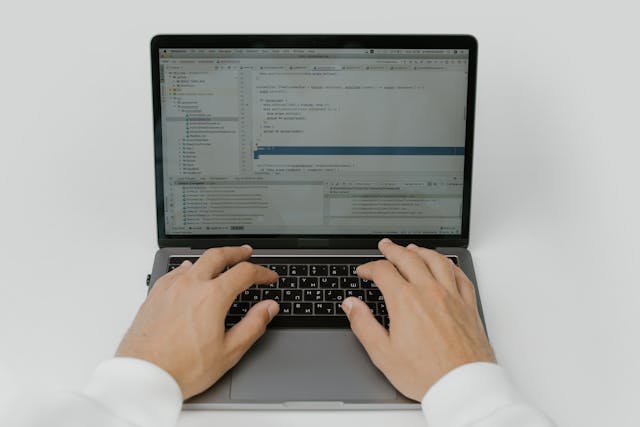An introduction to progress notes
Progress notes are a cornerstone of clinical documentation, essential for tracking a patient's health journey and ensuring continuity of care. These notes are more than a legal obligation — they serve as a vital communication tool between healthcare providers, helping monitor a client's progress and plan effective treatment.
Each session with a patient generates valuable information that should be documented in a structured, clear format. Whether you're a therapist, psychologist, or other mental health practitioner, maintaining accurate and consistent progress notes for future sessions is crucial to delivering high-quality care.
Here, we’ll explore how to craft effective progress notes that meet clinical standards and enhance collaborative care.
How do you write a progress note?
Writing an effective progress note begins with selecting a format that suits your clinical needs. Three formats are widely used in writing therapy progress notes in healthcare practices:
- Subjective, Objective, Assessment, Plan (SOAP) is the most popular format due to its comprehensive nature. It covers all key areas: the patient's account of symptoms, the clinician’s observations, a risk assessment of the patient’s condition, and the plan for future care.
- Behavior, Intervention, Response, Plan (BIRP) focuses on documenting patient behavior, the clinician’s interventions, how the patient responds to these therapeutic interventions, and the plan for the future. This format is ideal when emphasizing patient reactions and therapeutic outcomes.
- Data, Assessment, Plan (DAP) merges subjective and objective data into a single “data” section, making it a more streamlined option. It's commonly used when efficiency is a priority without sacrificing clarity.
Regardless of your format, it’s essential to write clear, concise, and consistent notes. Avoid vague language or unnecessary details that could detract from the note’s usefulness in patient care.
What should be included in a progress note?
Every therapy progress note template must contain essential elements to ensure it adds value to patient care and clinical operations.
Begin with the patient’s personal information — name, patient ID, session date, and clinician’s name. This basic information ensures accurate documentation and proper filing.
Next, describe the patient’s presentation. This is where you record your objective observations about the patient's behavior, mood, and cognitive function during the therapy session. Refrain from inserting personal opinions — stick to clinically observable facts.
After that, document the patient’s symptoms. Include the patient's or client reports and any observable signs that validate the client's status or symptoms. Combining subjective and objective data, such as lab results or vital signs, provides a more comprehensive view of the patient’s condition.
Finally, the intervention and treatment plan will be detailed. This section should capture how patients respond to their current treatment and outline any necessary adjustments. Clearly state the following steps, ensuring the treatment plan is actionable and understandable for all involved in the patient’s care.
How to write effective psychotherapy progress notes
Writing your therapy progress notes is not just about recording information. It’s about ensuring accuracy and utility in patient care. Here are key strategies for writing more effective therapy progress notes:
- Document immediately: Writing therapy notes right after a session ensures the information is fresh and accurate. Waiting too long can yield vague details, diminishing the note’s value.
- Leverage technology: Clinical management software like Carepatron allows you to access note templates and voice-to-text transcription tools, significantly speeding up documentation. These tools help you focus on patient care rather than administrative tasks.
- Be concise: While capturing relevant details is important, avoid overloading your notes with unnecessary information. Focus on the key points that will inform treatment decisions and patient progress.
- Avoid abbreviations: Avoid using abbreviations unless they are universally recognized. Therapy progress notes are often shared with other mental health professionals, so clarity is essential.
Following these practices will help you create psychotherapy notes and progress notes that are clear, effective, and easy to interpret for other providers involved in the patient’s care.
How to write therapy progress notes faster
Writing progress notes efficiently is crucial in a busy practice, but it doesn't have to come at the cost of quality. Here are three strategies to help you write progress notes faster:
- Take shorthand notes during sessions: Instead of writing long, detailed notes in real-time, jot down brief keywords or essential observations. This will allow you to stay focused on the patient while capturing key details that can be expanded into full progress notes later.
- Use clinical documentation software: Platforms like Carepatron offer templates, voice-to-text transcription, and automated features that significantly reduce the time spent writing notes. These tools streamline the clinical documentation process, allowing you to complete notes more quickly and accurately.
- Develop a routine: Creating a consistent process for writing notes after each session can speed up your workflow. Set aside dedicated time for documentation and stick to a structured format like SOAP note format or DAP so you always know what information needs to be included.
By adopting these methods, you can maintain high standards of care while efficiently meeting the client's response and documentation demands.
Example of mental health progress notes
Here’s an example of a progress note template using the SOAP notes format to give you a clear idea of how to structure your notes:
Subjective: Angela reports feeling “better” this week. She is sleeping for 6–7 hours per night and eating three meals per day. She confirms that she is adhering to her prescribed medication regimen.
Objective: Angela appeared well-groomed and was engaged throughout the session. Her speech was normal, and she displayed a full range of affect during the conversation.
Assessment: Angela is showing improvement, particularly in her mood and sleep patterns. She has adhered to her medication regimen, and her overall condition is stable with no new concerns.
Plan: Angela will continue weekly therapy sessions. Her goal for the next week is to incorporate regular exercise into her routine (three times a week). The next session is scheduled for 3 PM on 06/08/2022.
This example illustrates how to document essential information concisely while ensuring that each section of the SOAP format is covered.
Progress note templates + examples
Unlike progress notes that are done from scratch, standardized templates are handy for healthcare practitioners looking to enhance their documentation process. Here are two essential templates:
- SOAP Note Template: The SOAP Progress Notes Template is a widely used format that ensures that all necessary components (subjective, objective, assessment, and plan) are covered, providing a consistent way to document patient progress.
- DAP Note Template: The DAP note format divides notes into three sections (data, assessment, and plan) — making it quicker but still effective for documenting patient care. It’s ideal for clinicians who must write notes quickly while maintaining thoroughness.
These templates will streamline your workflow and ensure your client's medical record meets clinical and regulatory standards, such as HIPAA compliance.
Final thoughts on documenting progress notes
Progress notes are critical to healthcare documentation, ensuring that patient care is accurately tracked and effectively communicated among providers. Consistency and clarity in individual or group therapy notes are vital for maintaining high-quality records, whether you use the comprehensive SOAP format, the behavior-focused BIRP method, or the streamlined DAP structure.
Incorporating clinical software solutions can further enhance your documentation process, making it faster, more efficient, and easier to manage. By mastering the art of writing progress notes and client reports, you contribute to better patient outcomes and a smoother workflow that benefits your entire healthcare practice.





.jpg)

.jpg)

.jpg)
.jpg)





.jpg)

.jpg)






.jpg)
.jpg)


.jpg)